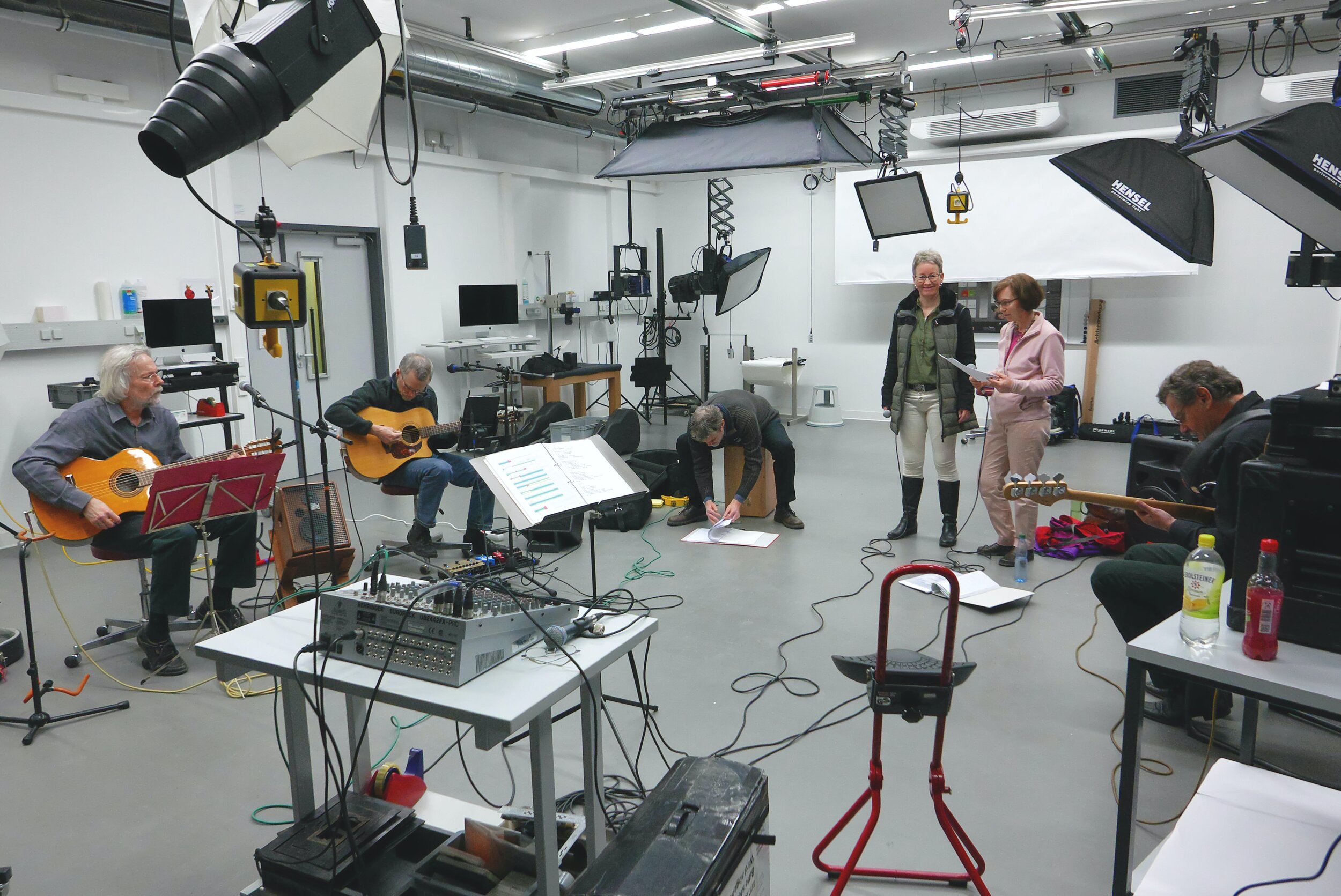How Does One Person and a Computer Replace an Orchestra?
The music that you hear on TV and in the movies is all a bit obvious really. The rolling credits at the end have a selection of classic or recent pop music, whilst the background music in the rest of the programme or film is just a recording of an orchestra. Job done. Move on. Nothing to see here.
Except… that background music almost certainly isn’t a recording of an orchestra. Well, not in the way you think. For a start, you probably have an image in your mind of a huge hall with an orchestra and a choir, all togged up in their smartest clothes.
Photo by Manuel Nägeli on Unsplash
And you would probably be very wrong.
Okay, so maybe various instruments were recorded separately? Like this?
Photo by Immo Wegmann on Unsplash
Wrong again.
Except for blockbusters with insane budgets who use PR companies with expense accounts the size of some third world countries, a lot of the music that you hear on TV and films is produced in a slightly more modest way…
Like: One person and a computer.
The person is the composer, arranger, conductor, sound recordist, editor, mastering engineer and producer (sometimes a few more roles than this, sometimes less…). The computer is there to do everything else. In particular, the computer is often the musician, and the human being isn’t. Yes, the musical stuff concerned with actually making sounds is the responsibility of the computer, and the person who presses buttons, moves their fingers on the trackpad (or moves the mouse), and gets a credit as the ‘composer’ or ‘arranger’ may not even be able to read music, or sing a note. And they don’t need to be able to…
The last couple of decades have seen a lot of change in many industries. The production of music, from classical to popular, and even music that ought to be unpopular (people screaming instead of singing, for example) has changed so much that most people would not recognise most of the stages of the process. The only thing that might be identifiable is the computer, but it will probably be connected to unfamiliar hardware, and running very unfamiliar software. Oh yes, and tape recorders may well start turning up on Antiques Roadshow any day now…
The computers run software called Digital Audio Workstations, or DAWs. These are like tape recorders, except they aren’t. There is no tape, no analogue signals, no splicing, and no reels. Inside the DAW, Virtual Instruments make the sounds as numbers, inside the computer. So that violin playing the haunting, sad melody? It’s not a real violin. It is made up of lots of little recordings of single notes from a violin, played softly, hard, plucked, roughly, and more, and then edited in fine detail to produce what is called a Virtual Instrument, and which is arguably more perfect than the finest real-world violin. That piano twinkling away with glorious arpeggios? Another Virtual Instrument, maybe this time a combination of little recordings plus special processing that uses Artificial Intelligence to reproduce the sound of a beautifully tuned and setup piano without requiring days of preparation.
There are entire industries, that you’ve almost certainly never heard of, devoted to providing the software inside that computer, and the hardware it is connected to. Specialist companies focus on DAWs, on Virtual Instruments, on Libraries of complete Orchestras made up of Virtual Instruments, or on effects like Reverb or Echo. Most of this happens inside the computer, as numbers, or those numbers get sent to other computers in external boxes, where they are processed, and then sent back again to the computer.
What does Sound Extensions do?
We make custom Virtual Instruments that are the digital equivalent of hand-built musical instruments. We write custom processing software that does special things inside DAWs. We do work for people that you have probably heard of… and also give away examples of our work to show what we can do!
Some examples of our free stuff:
https://www.pianobook.co.uk/library/vacuumtap/
https://maxforlive.com/library/device/5146/midi-probablychord



